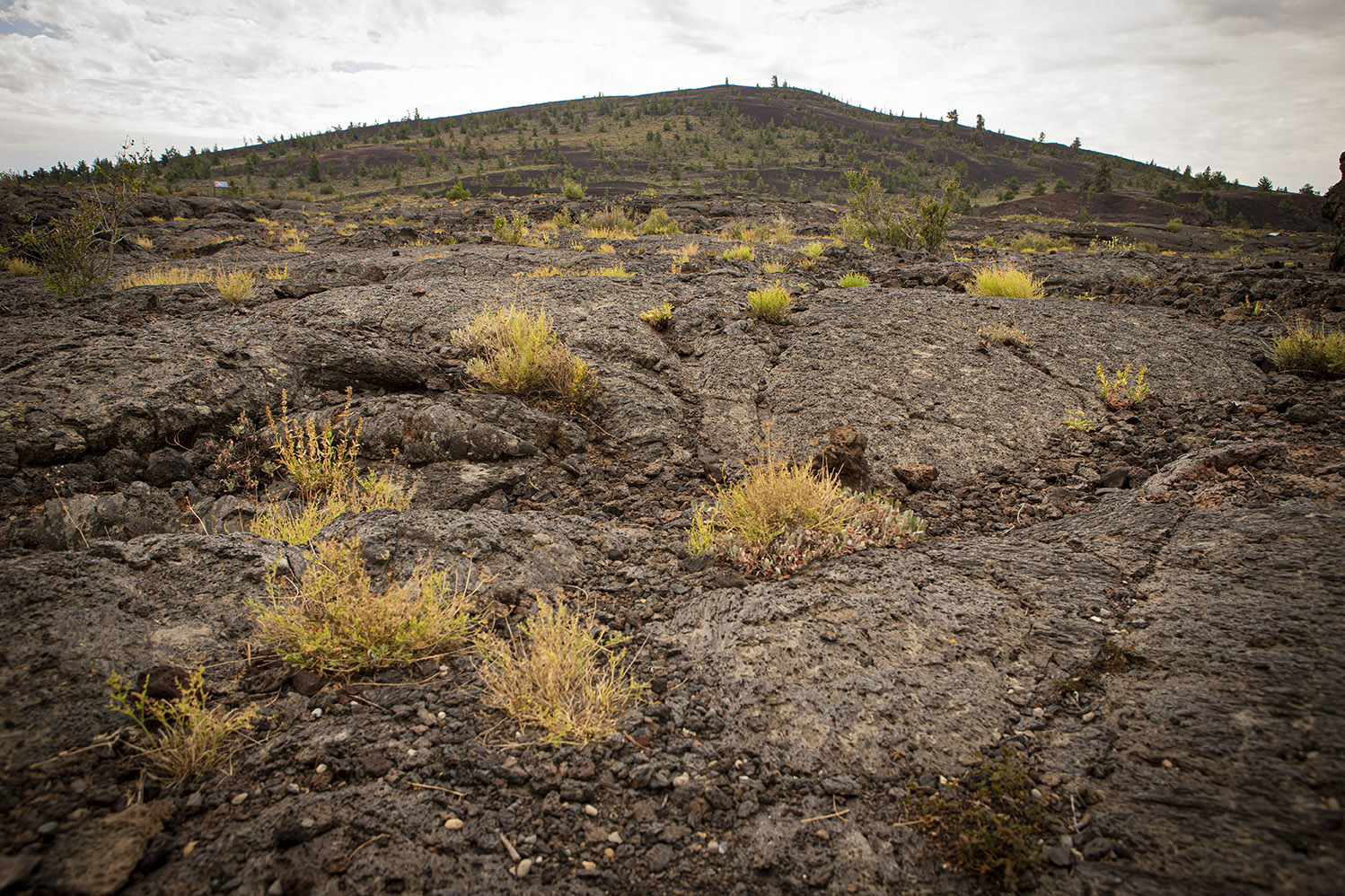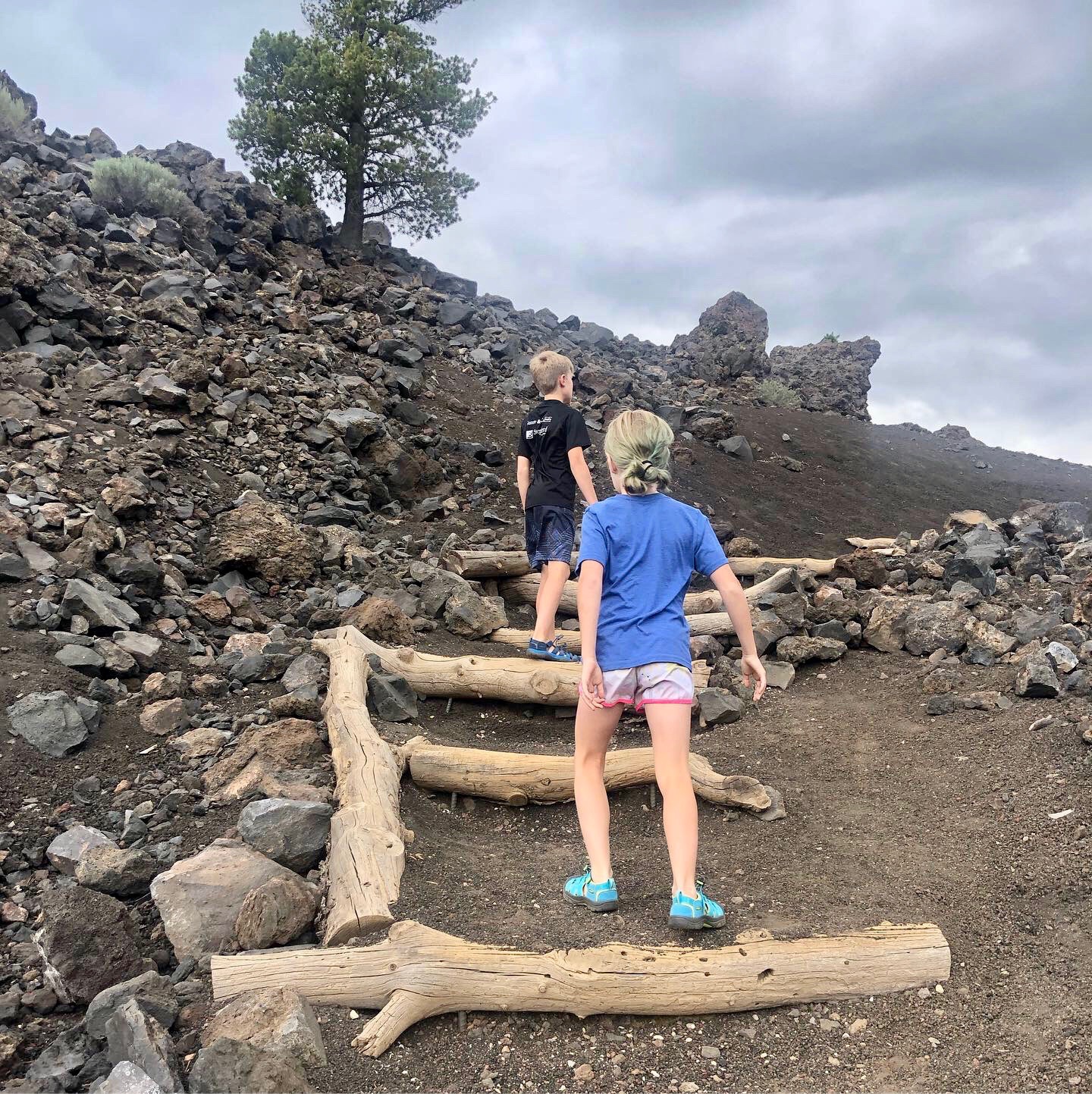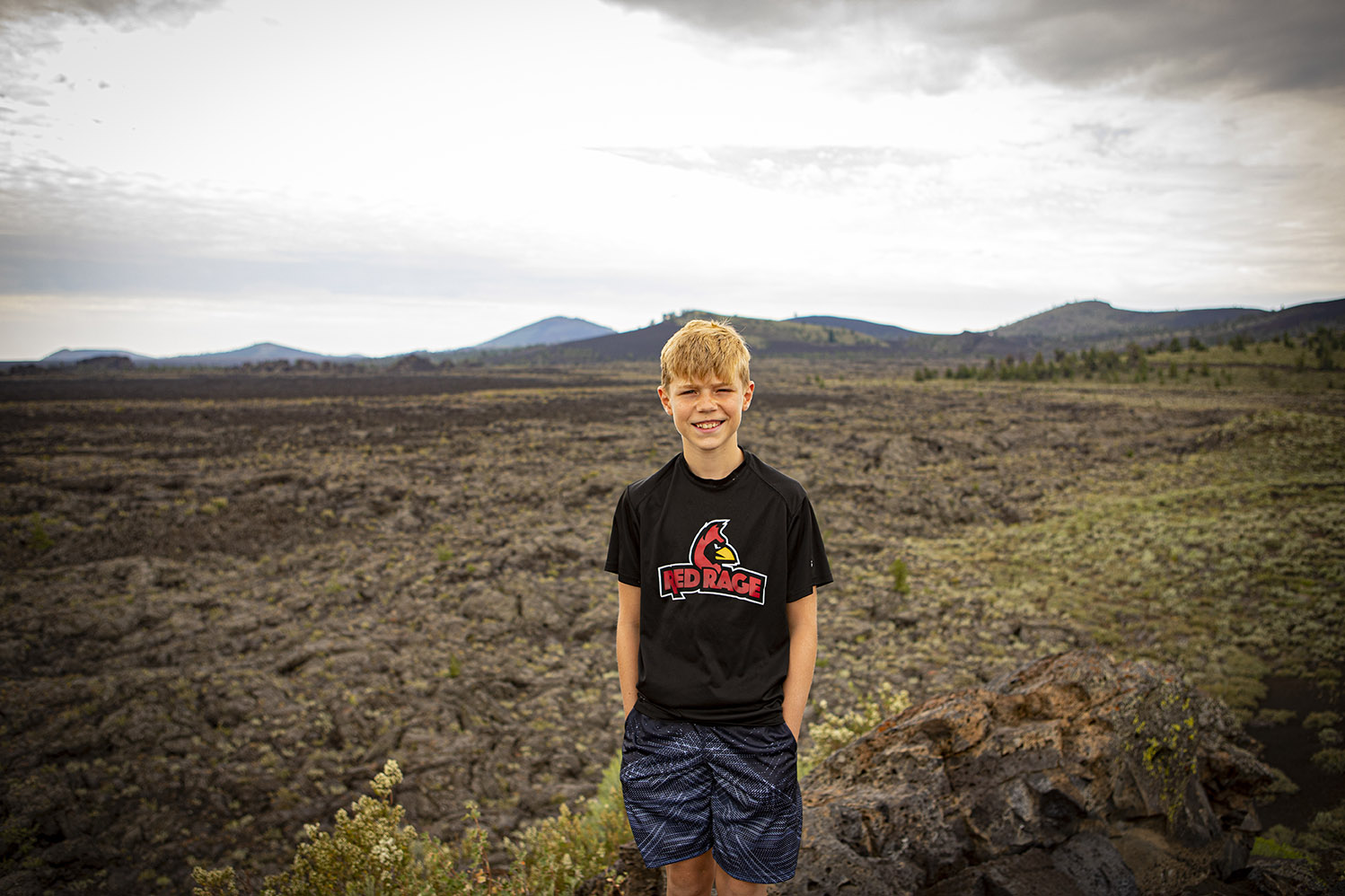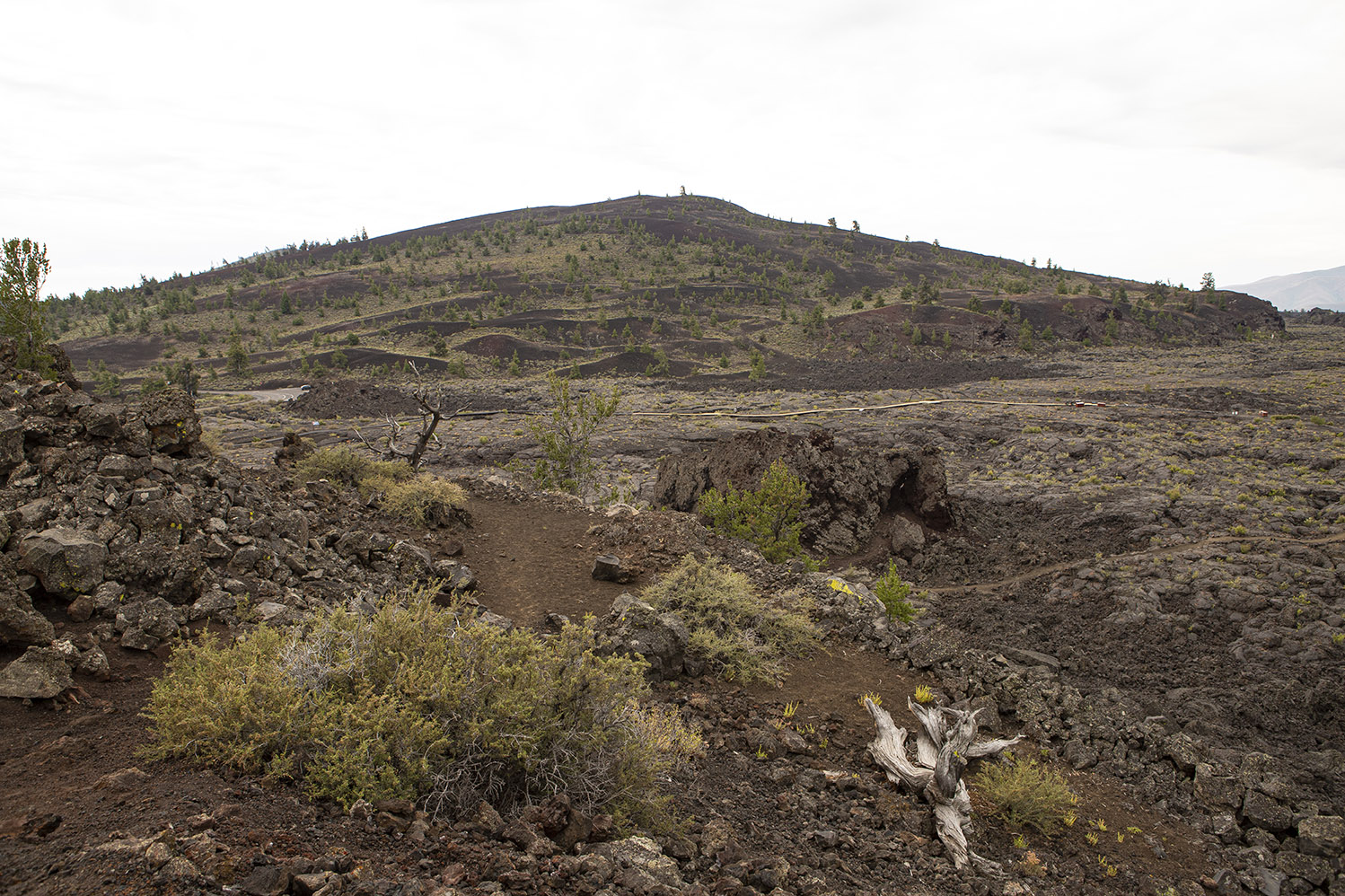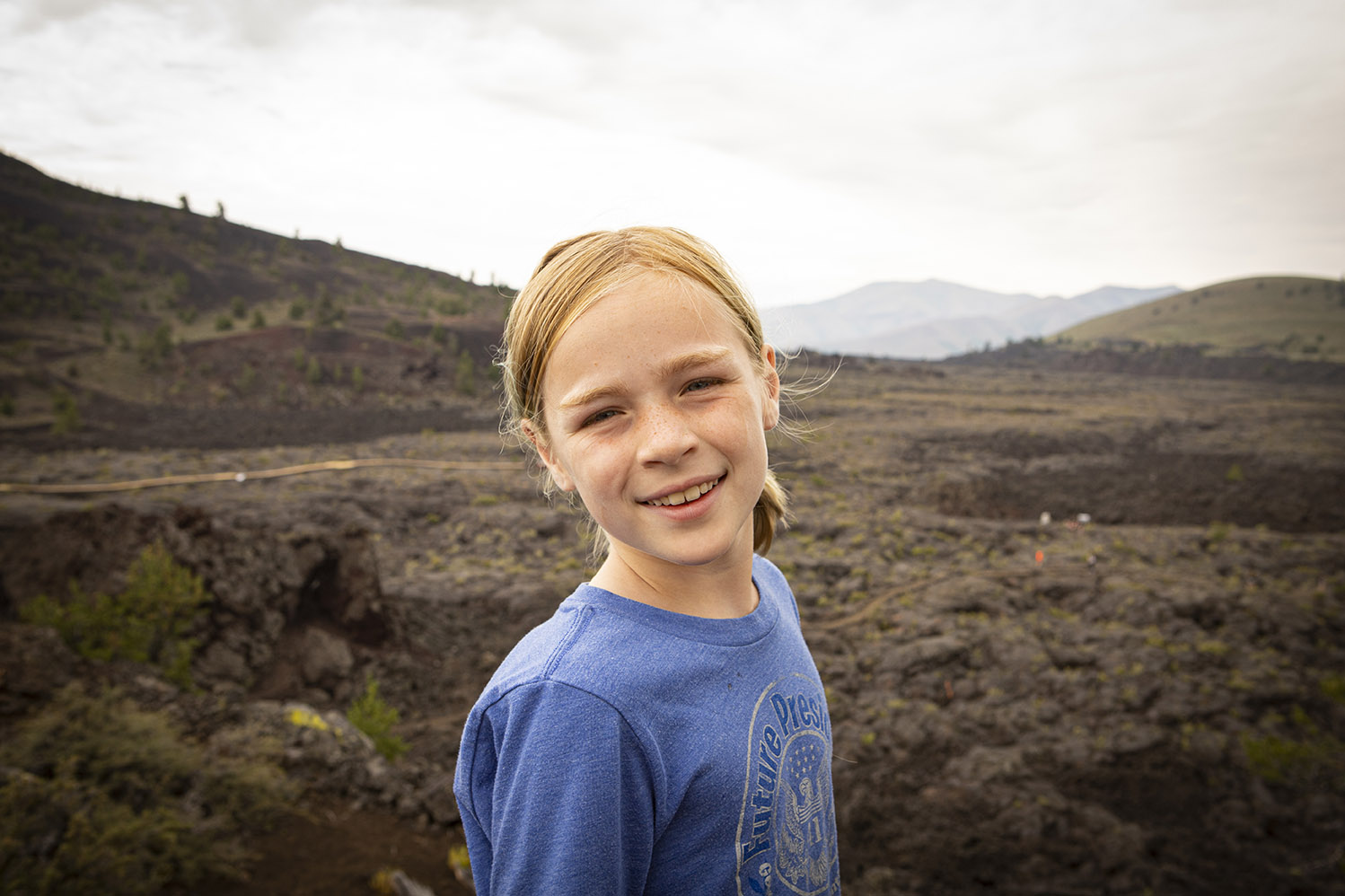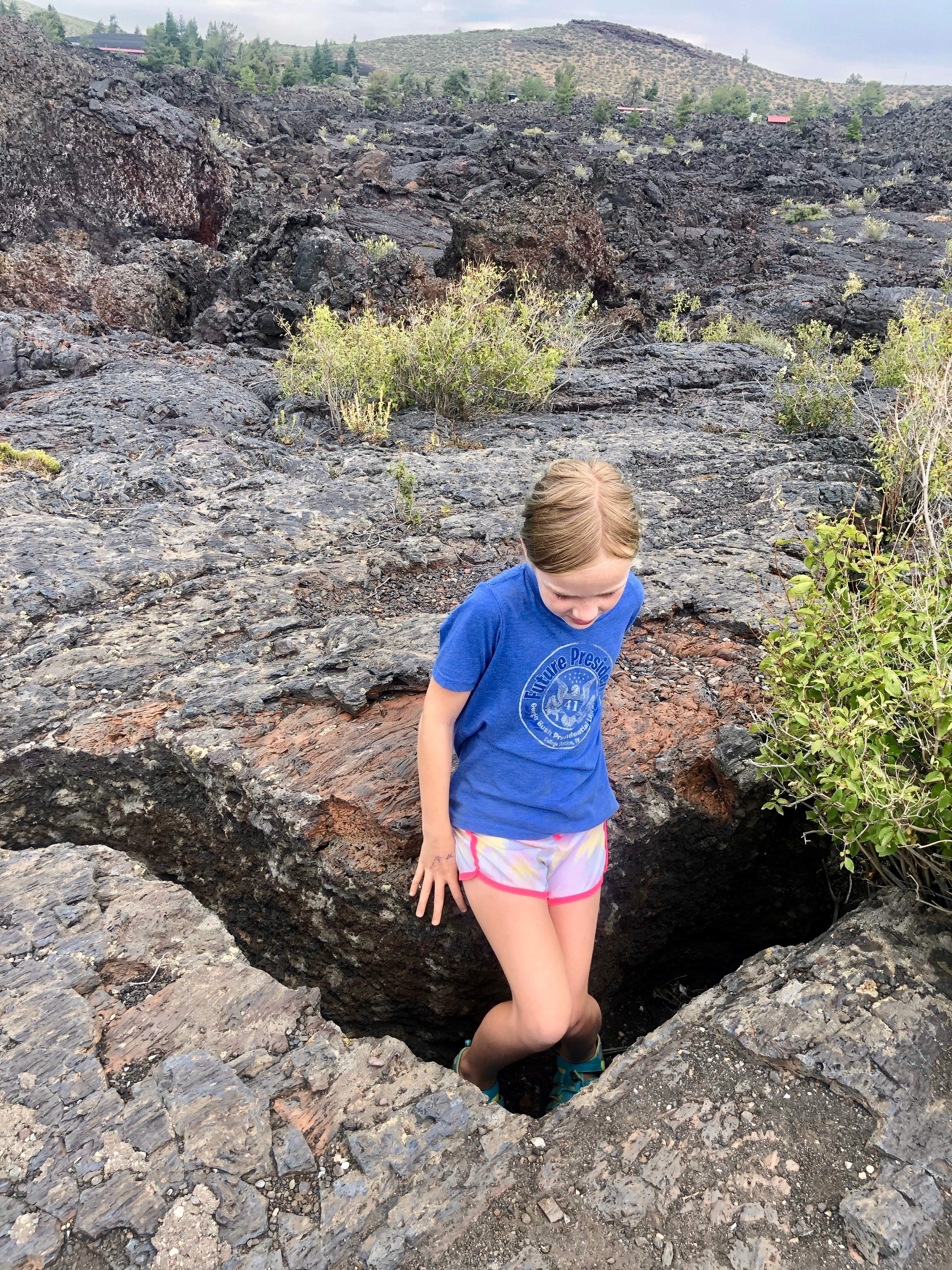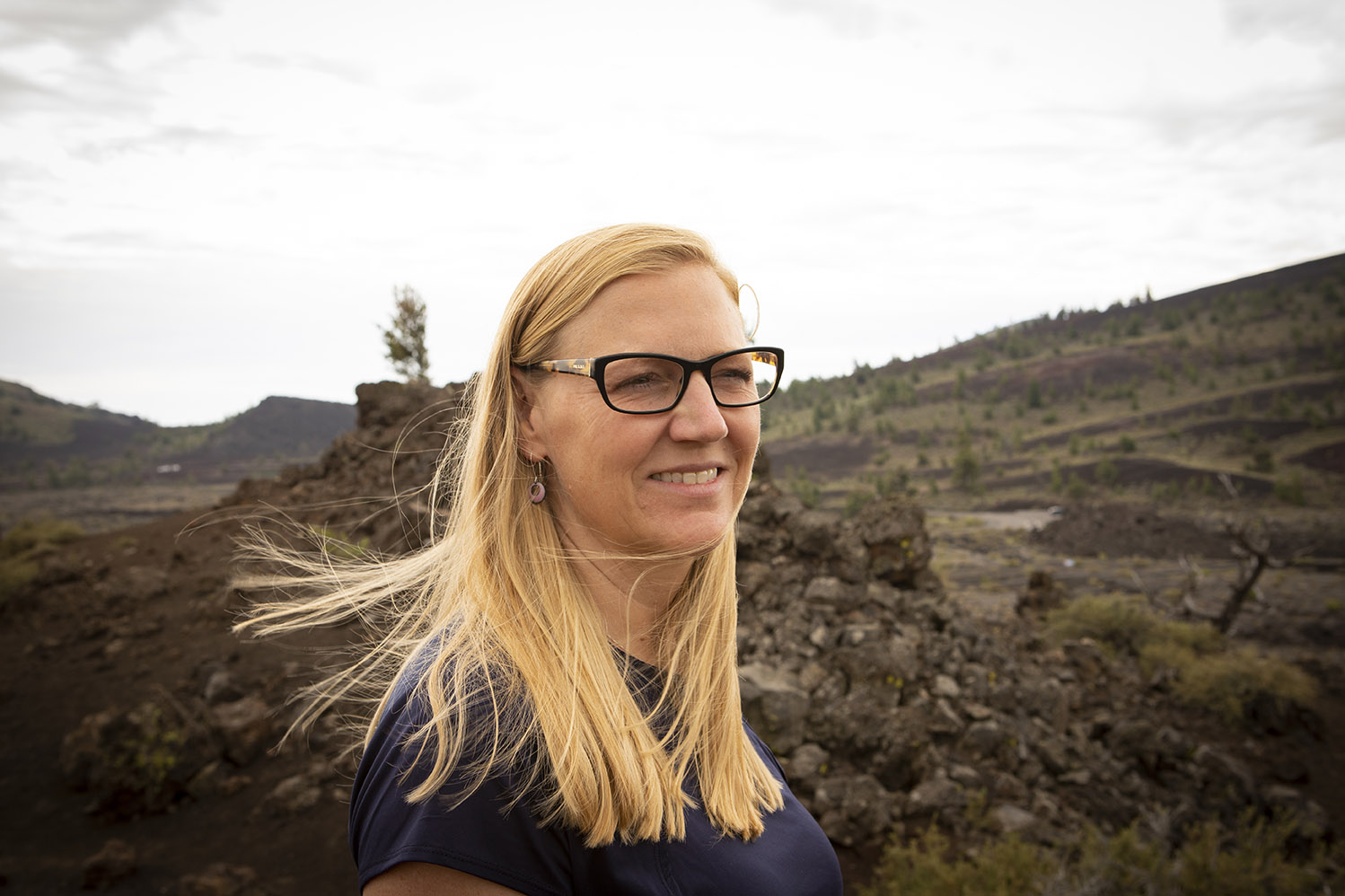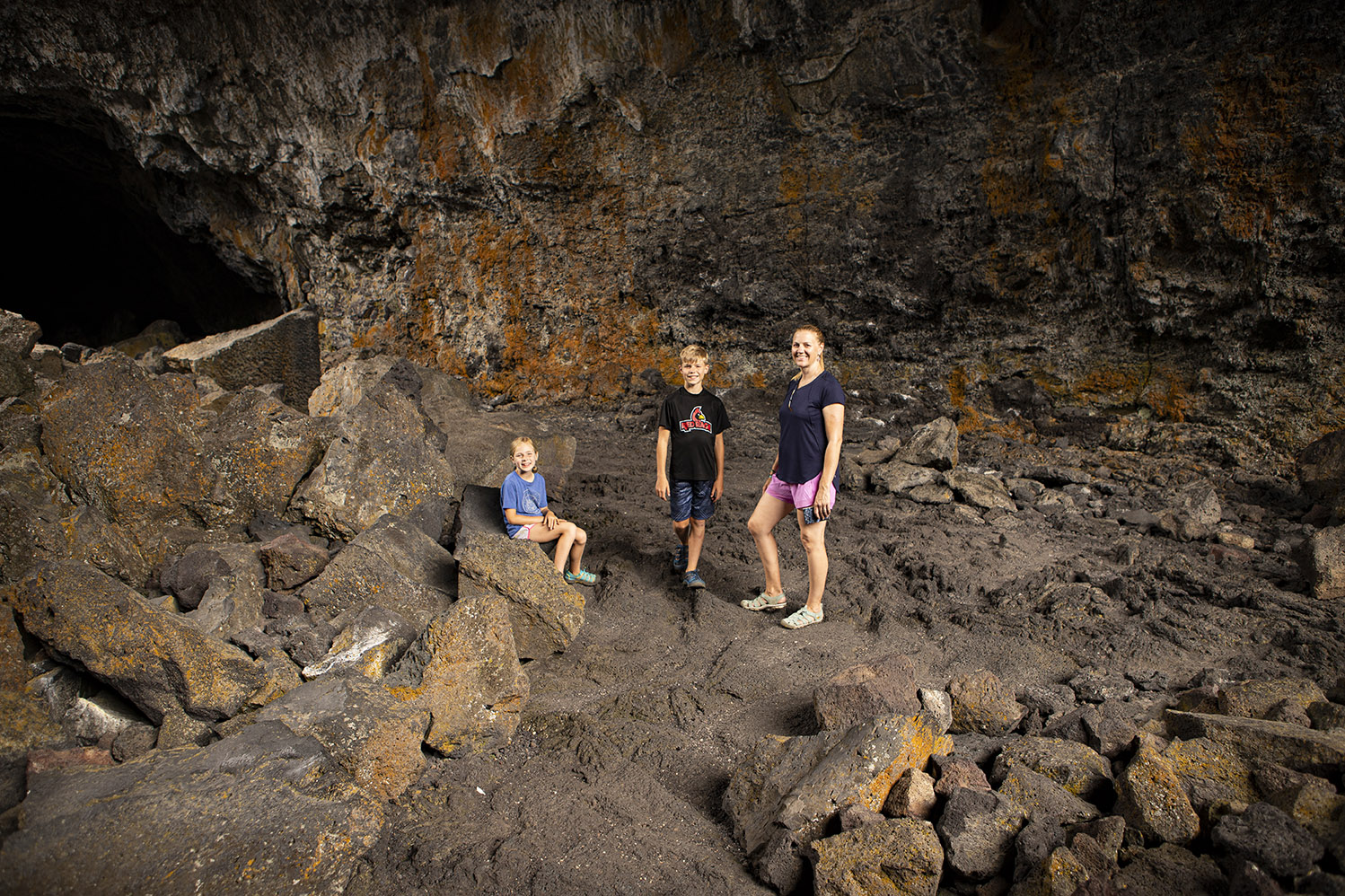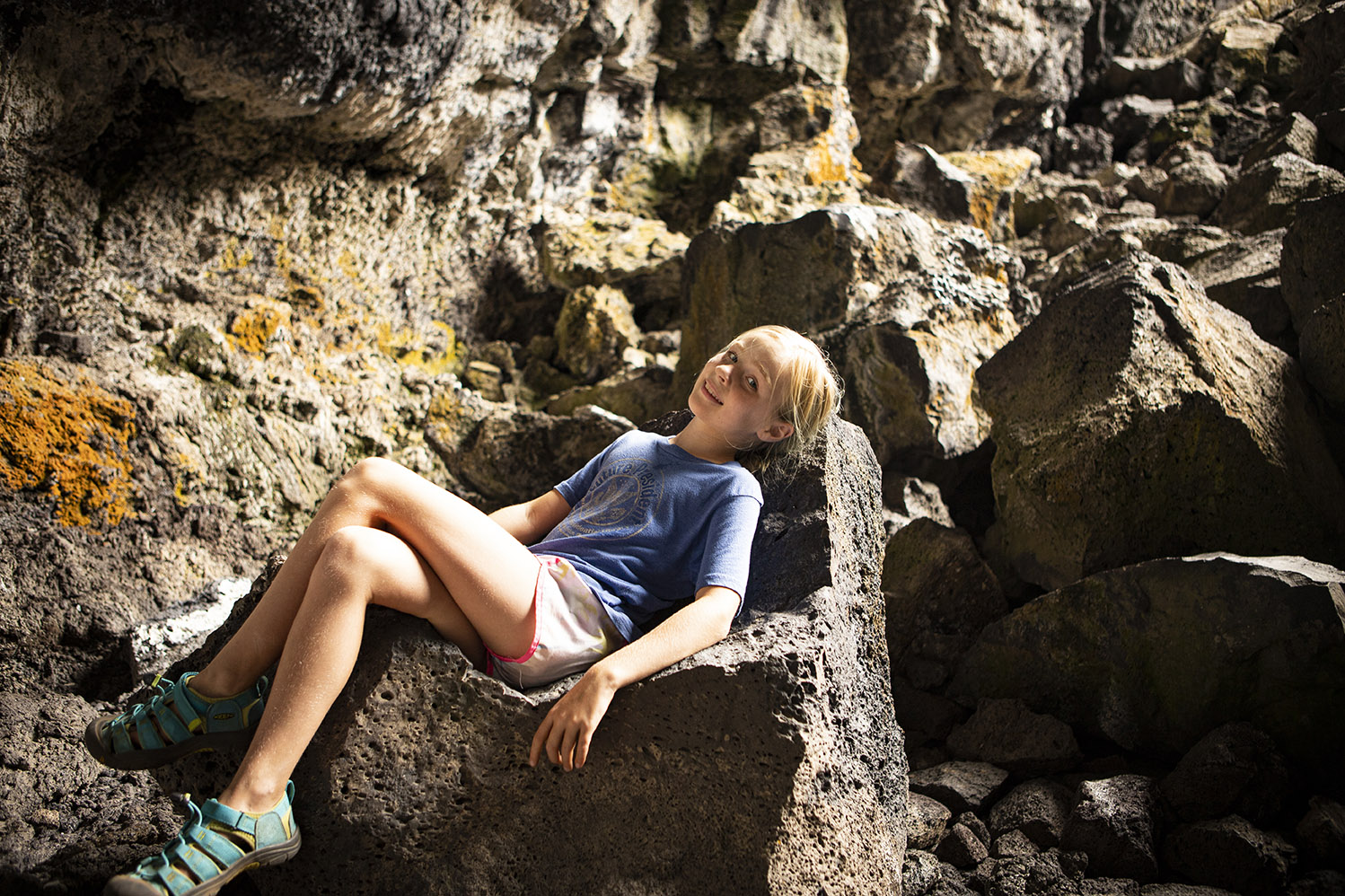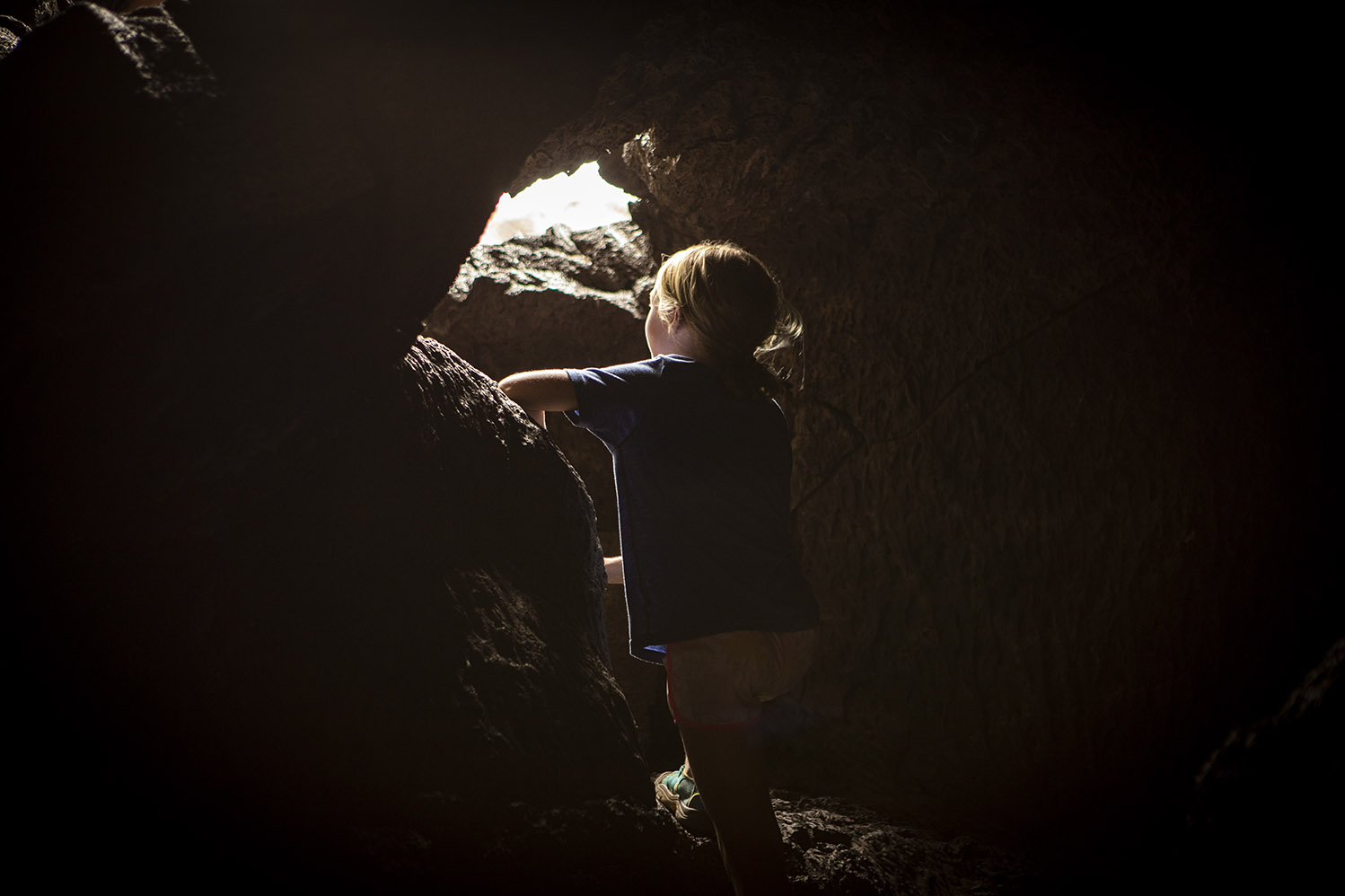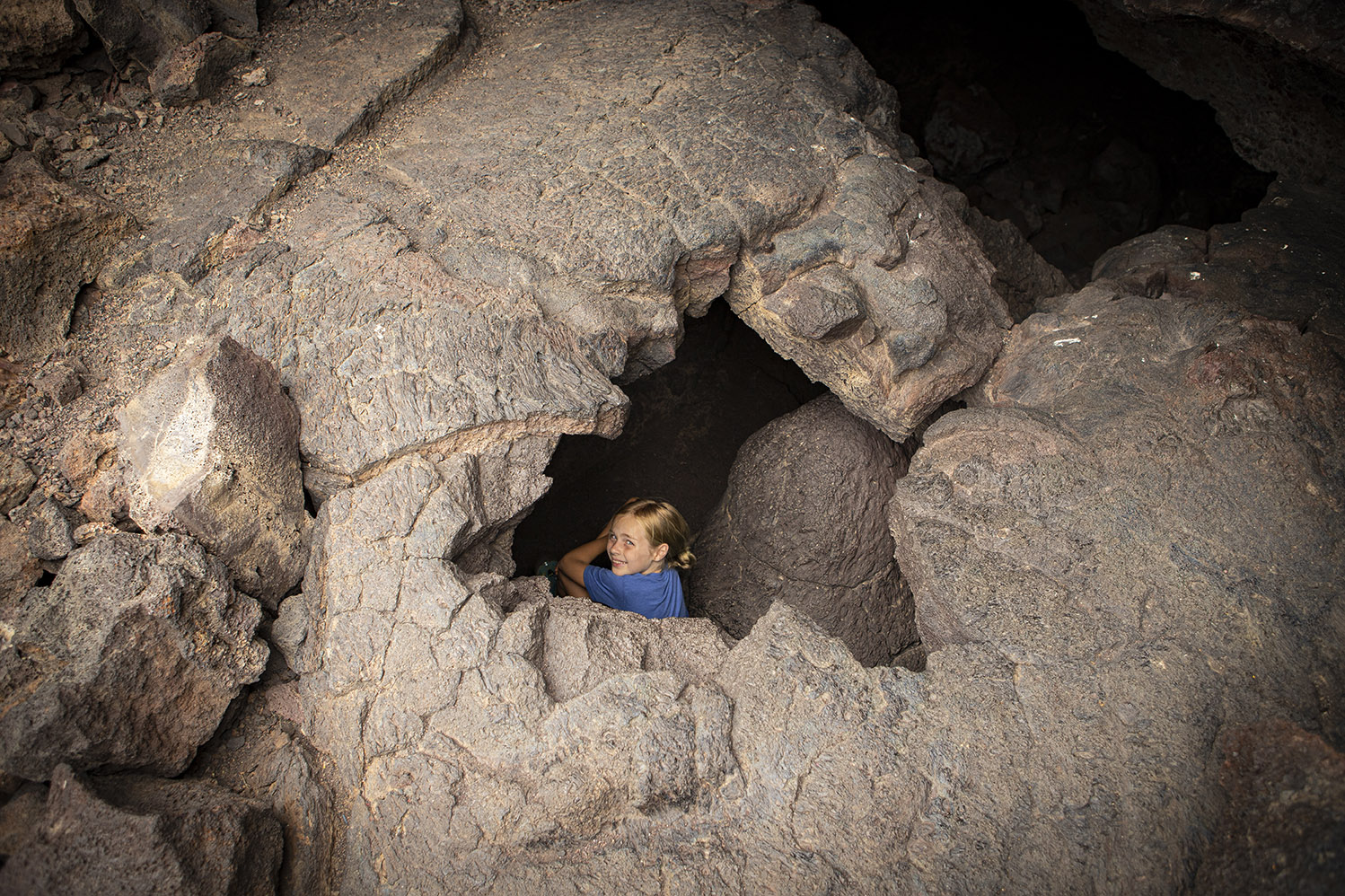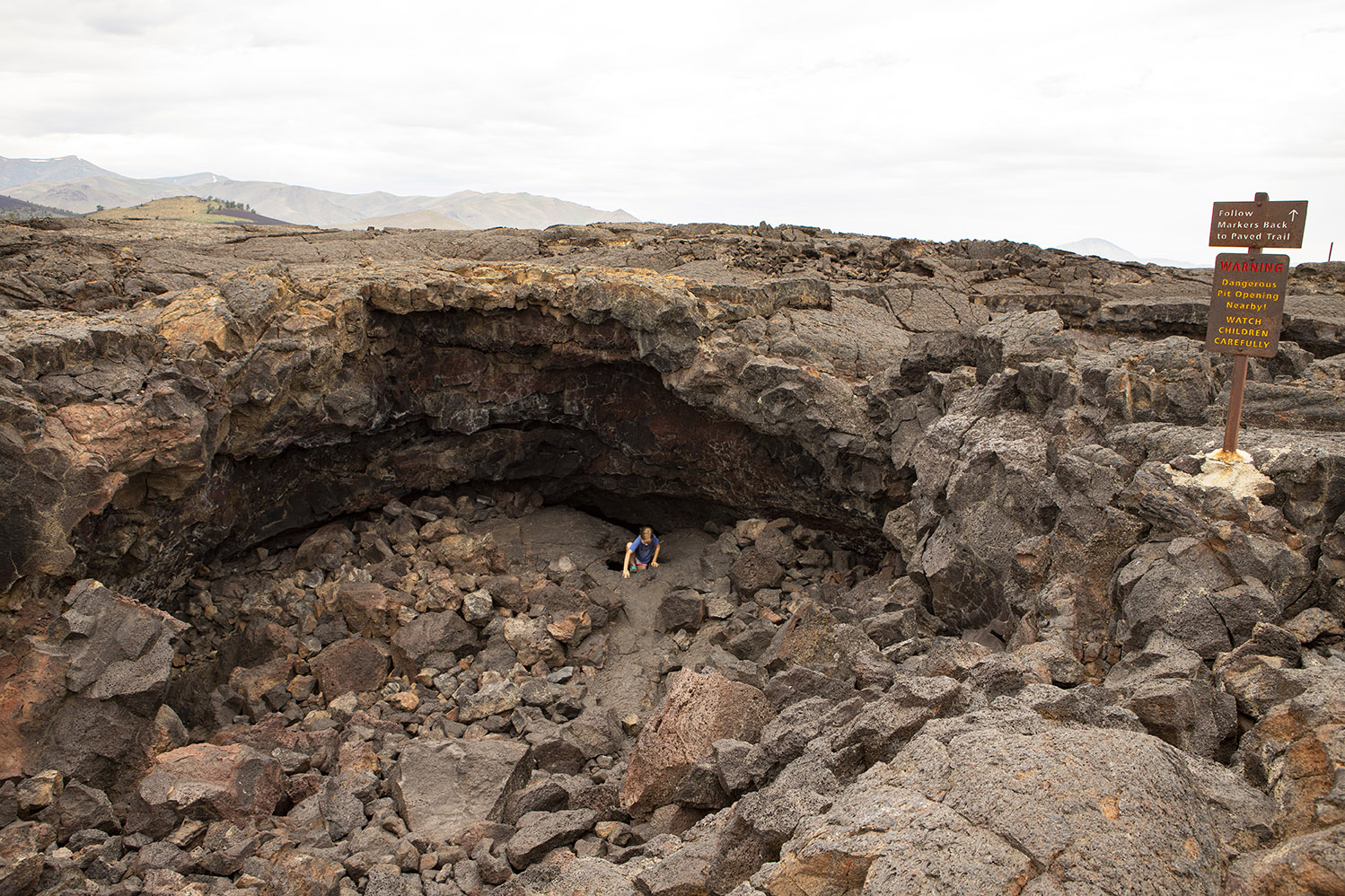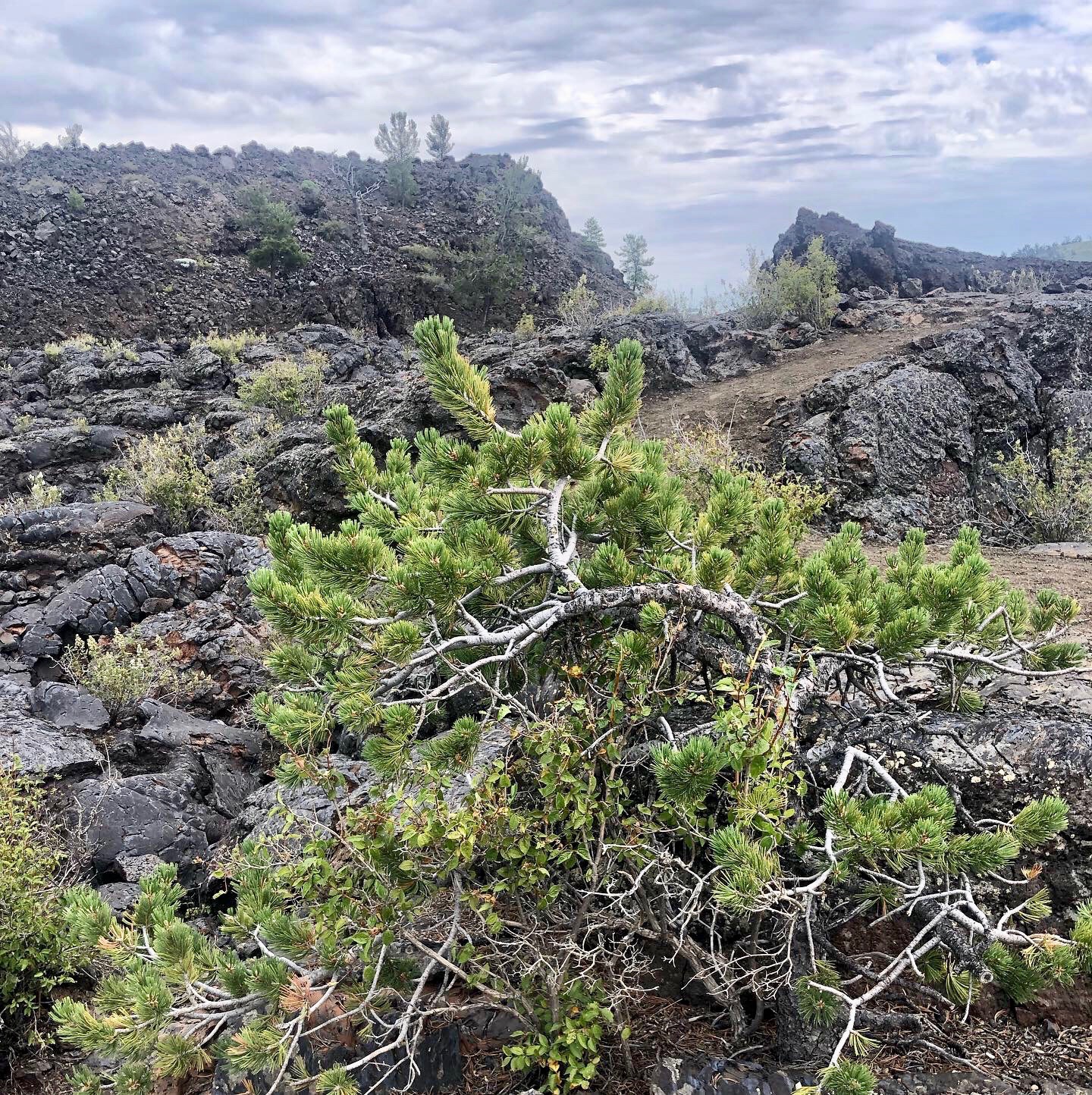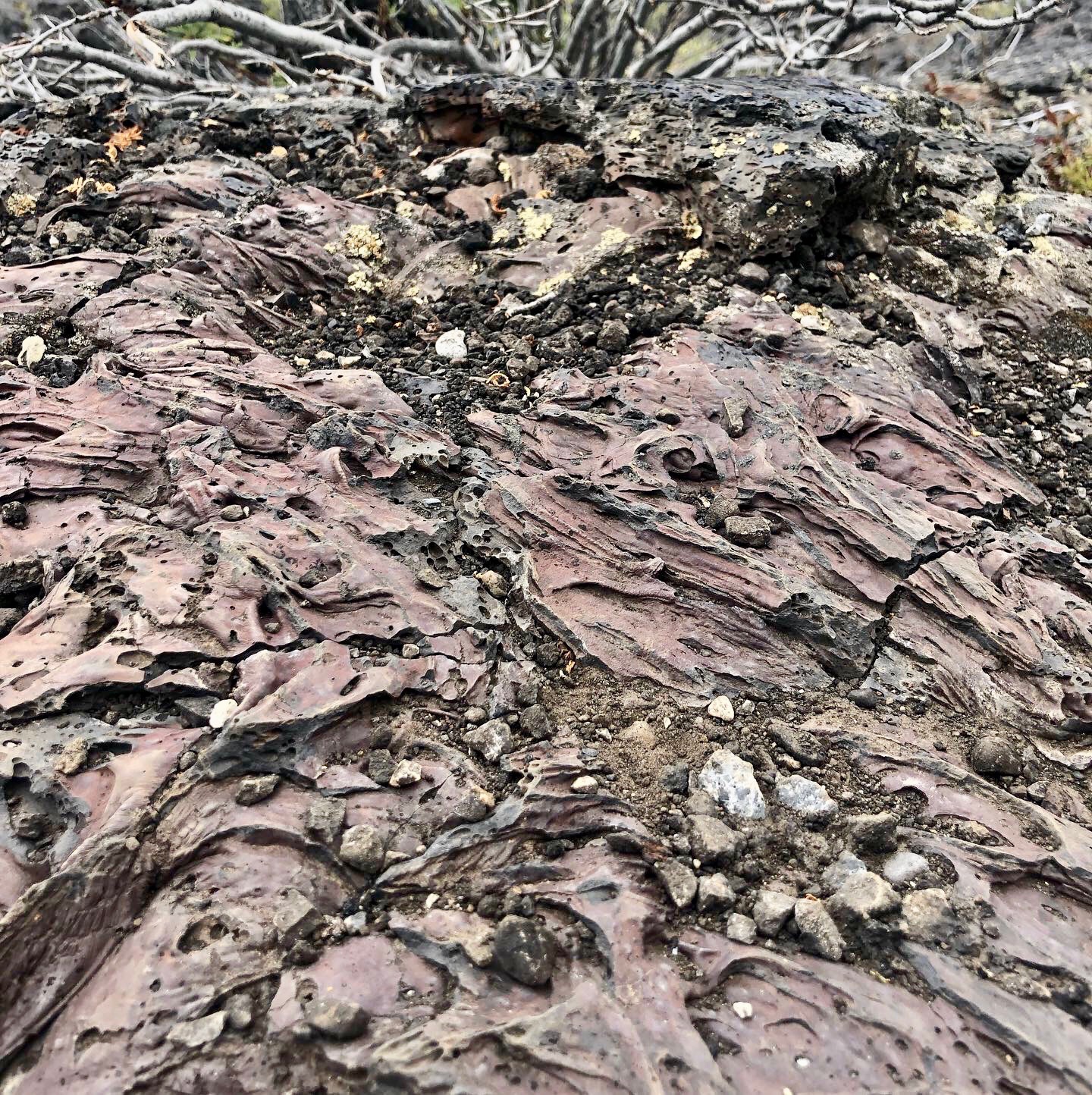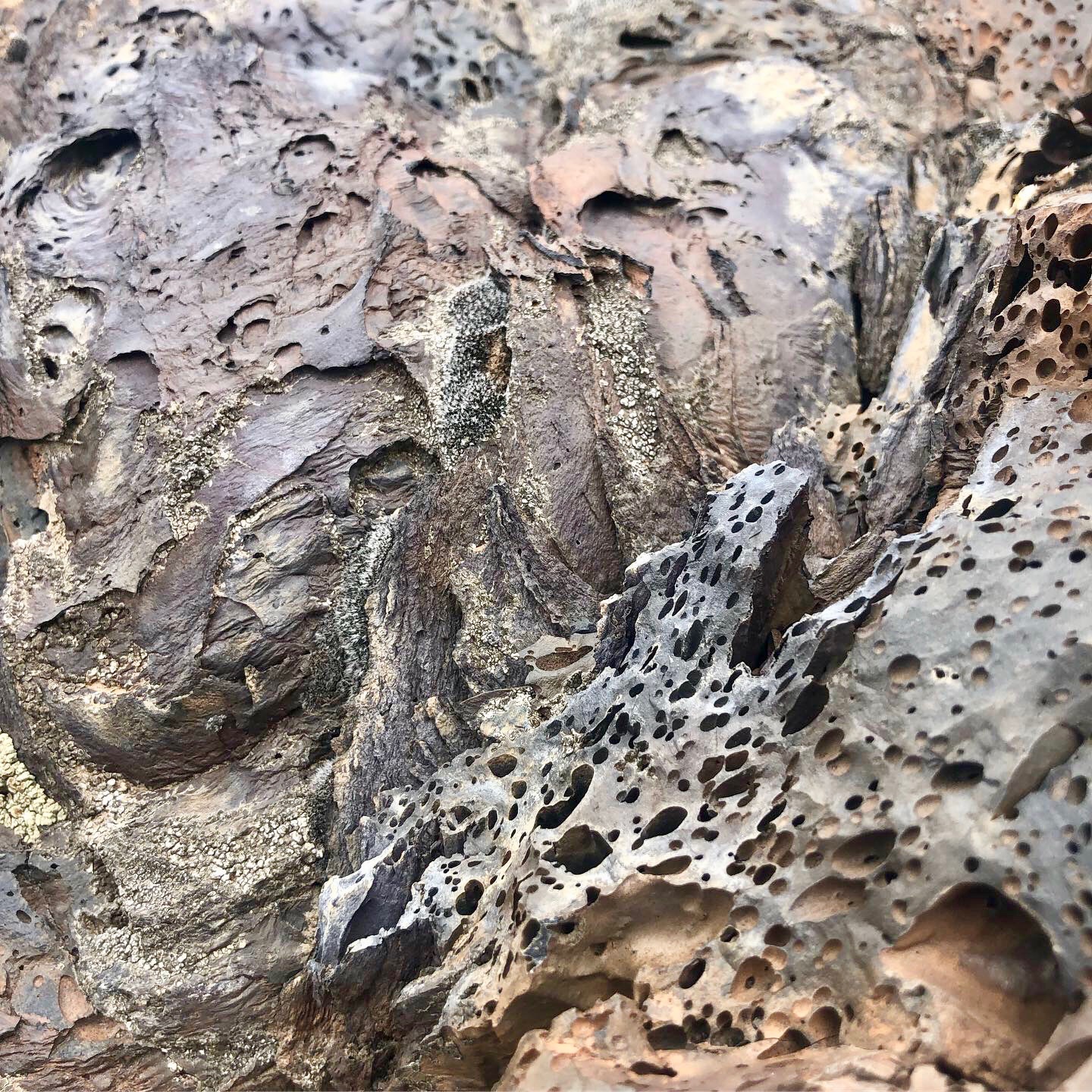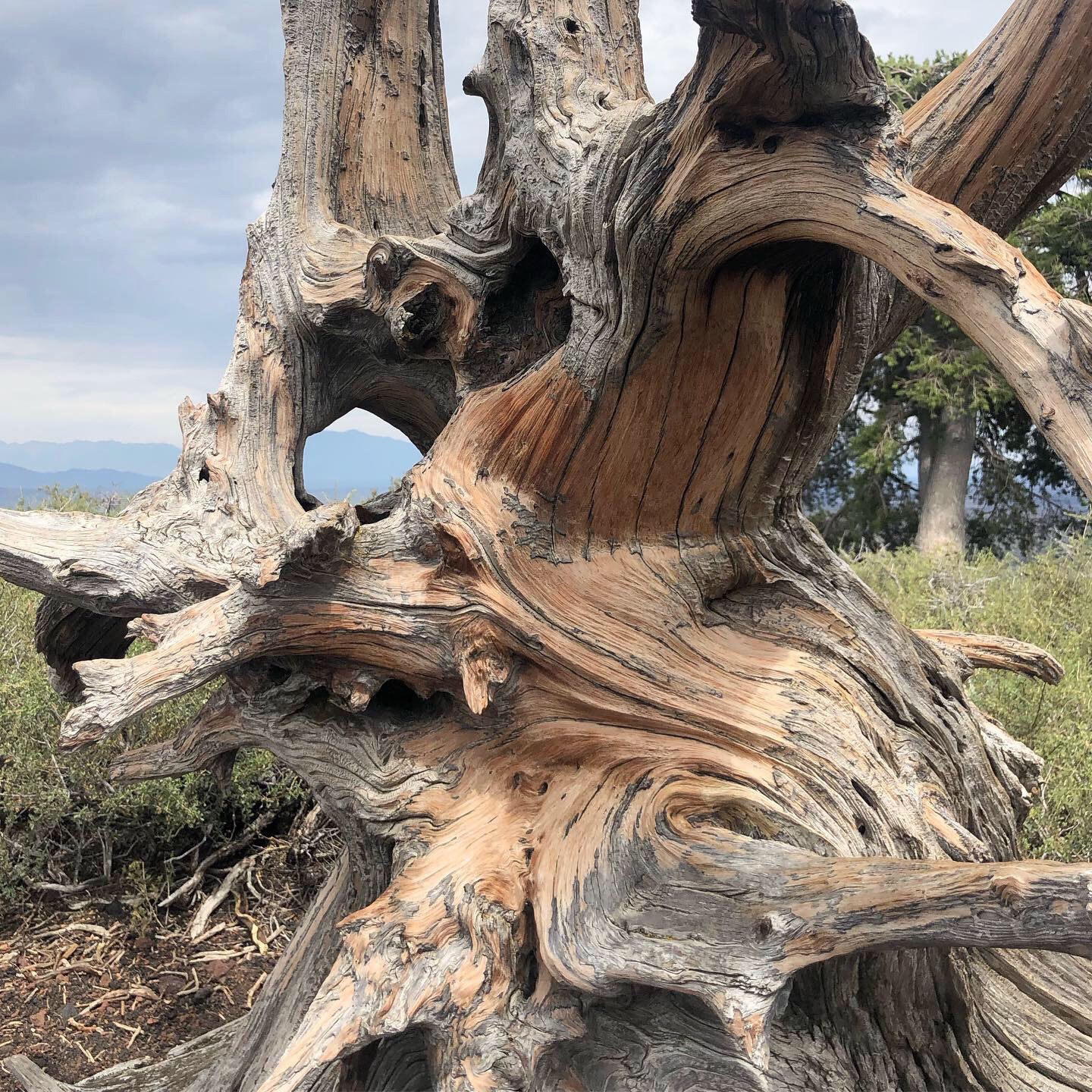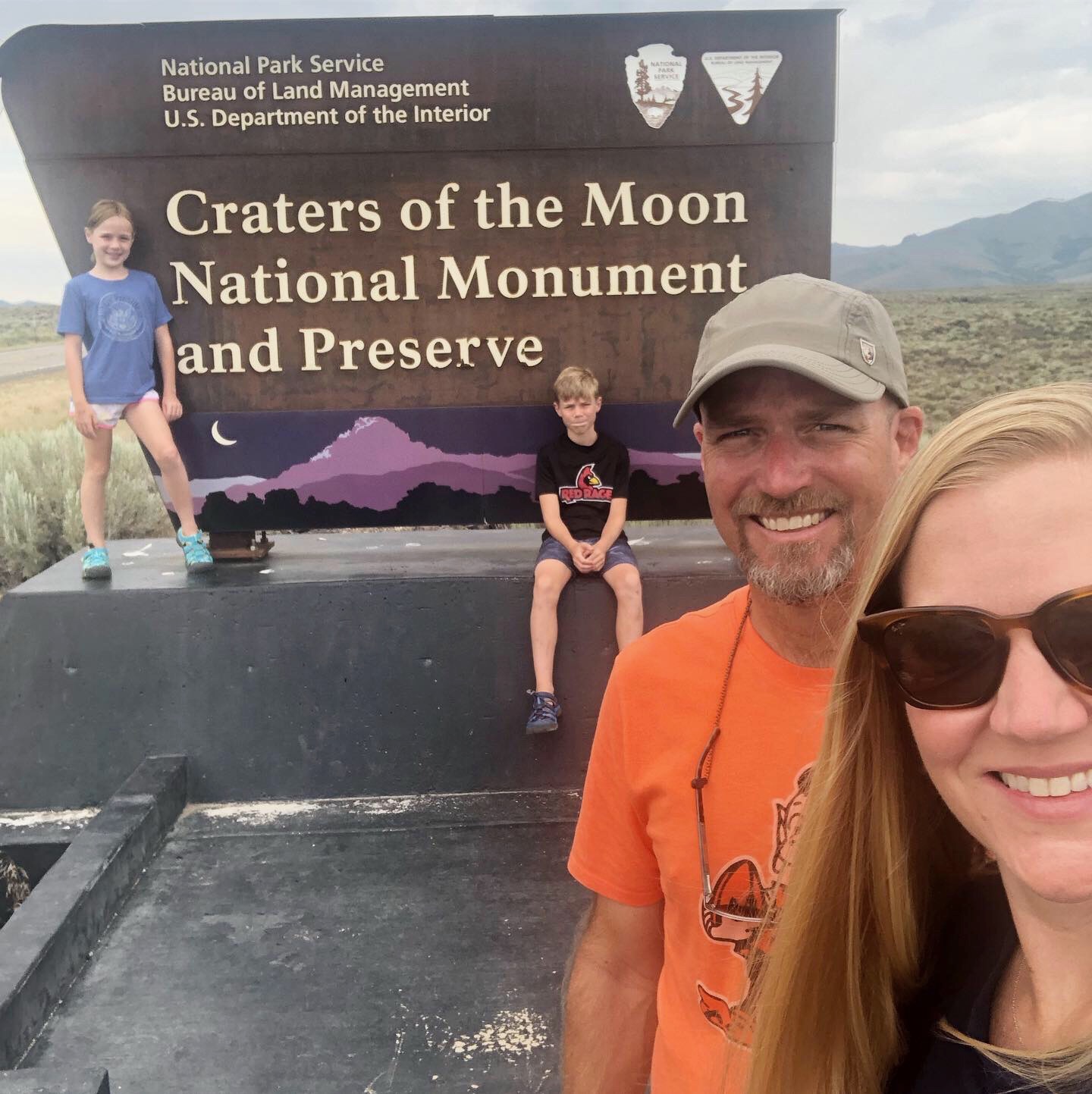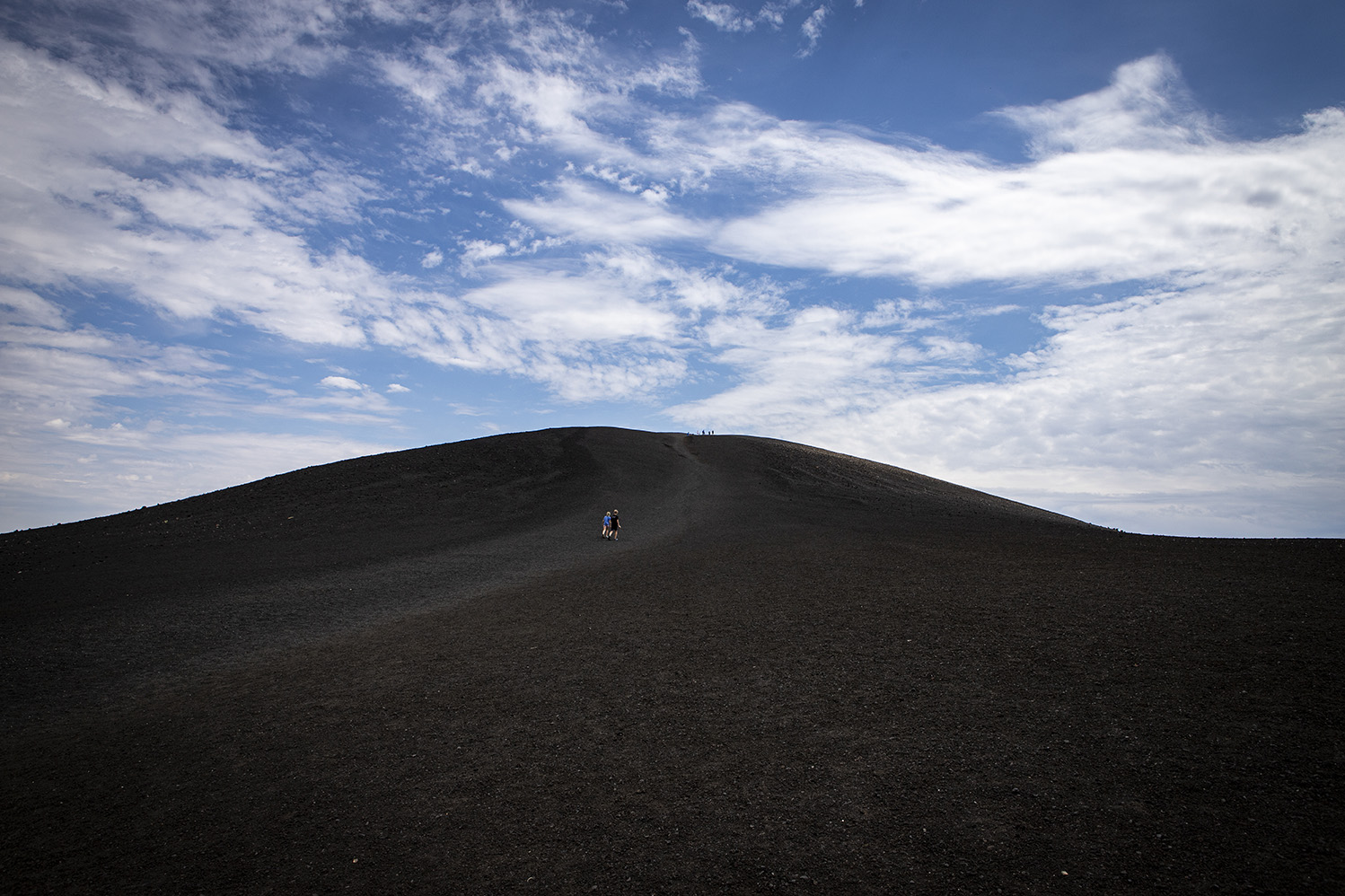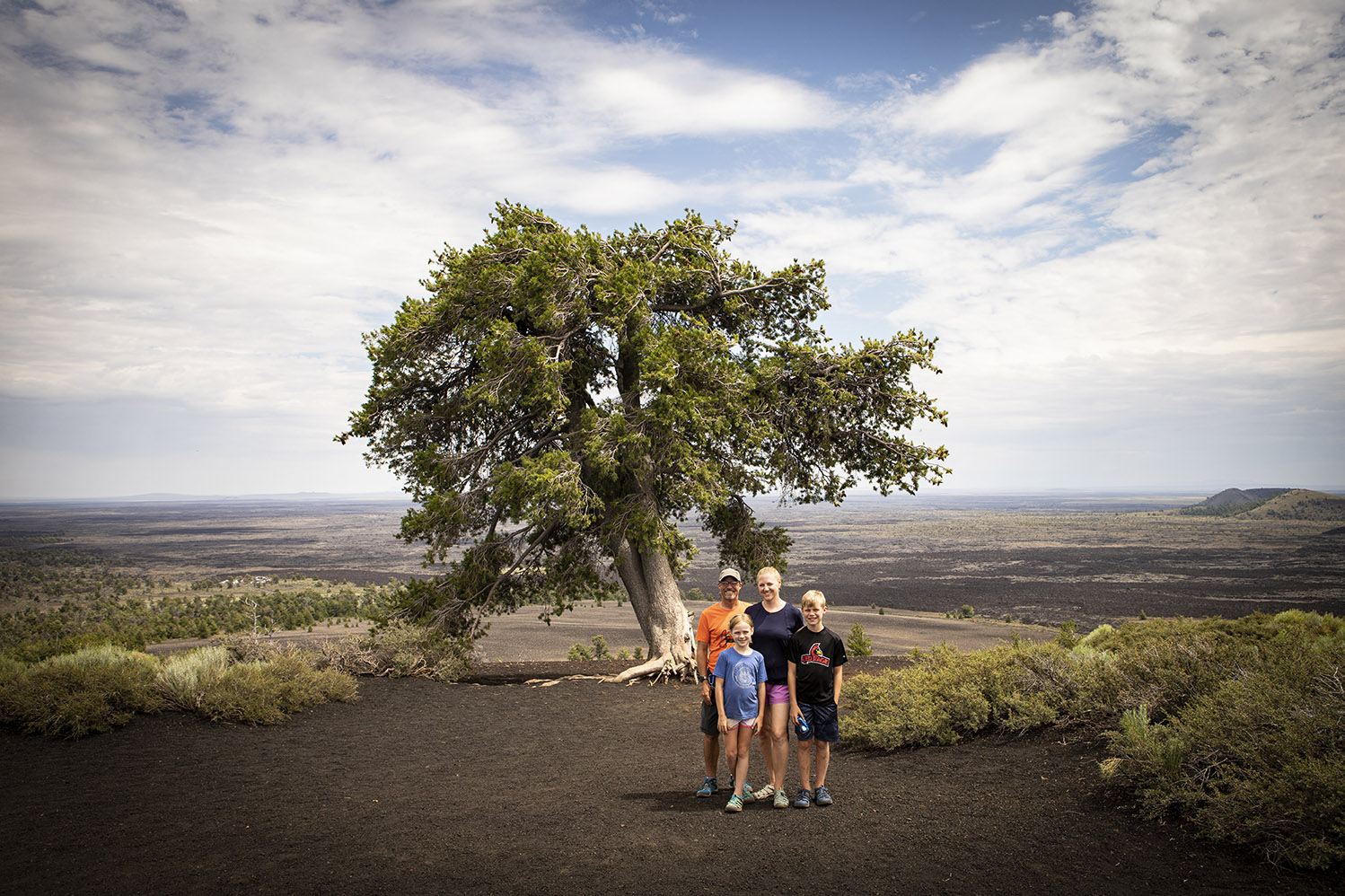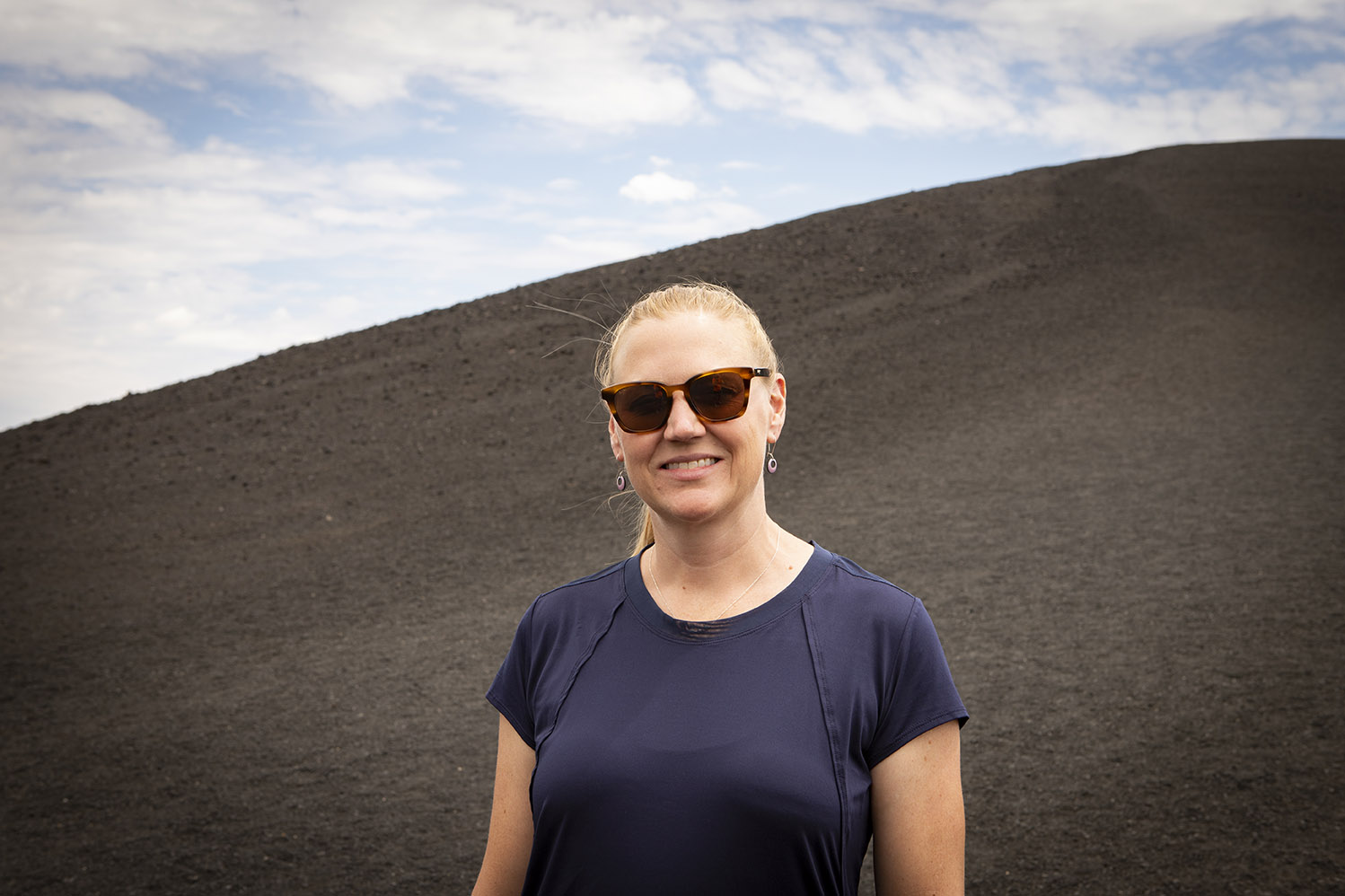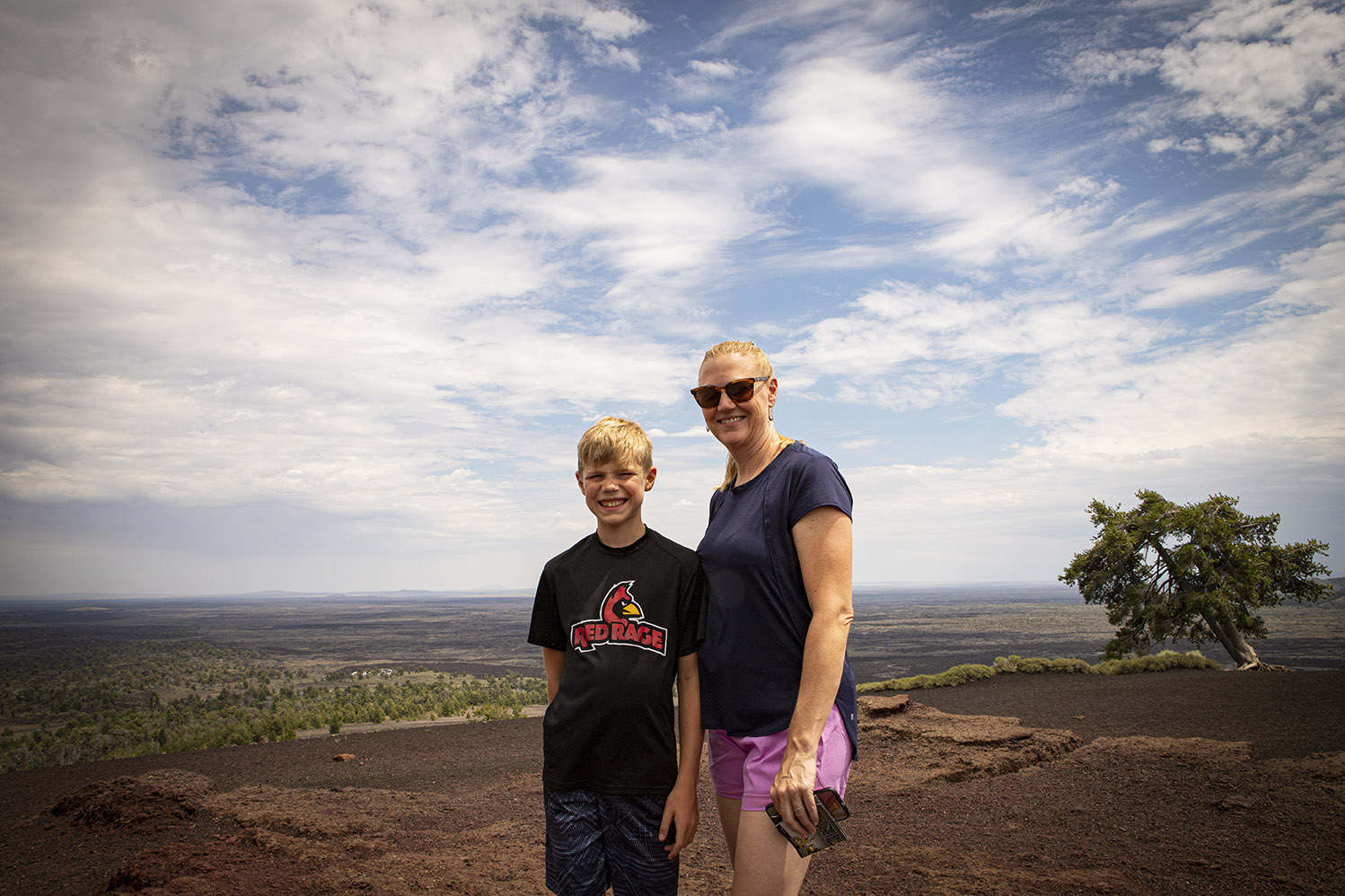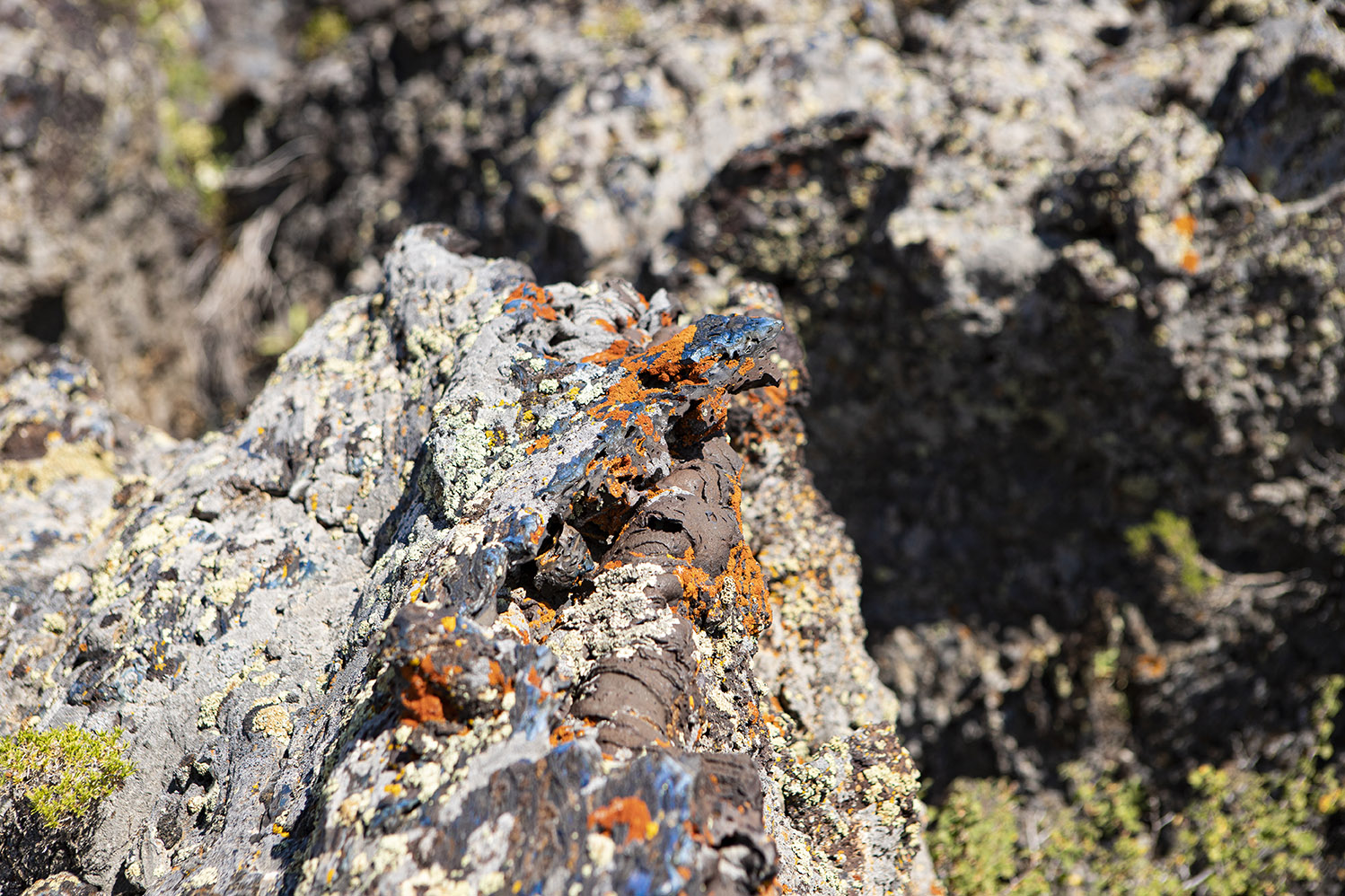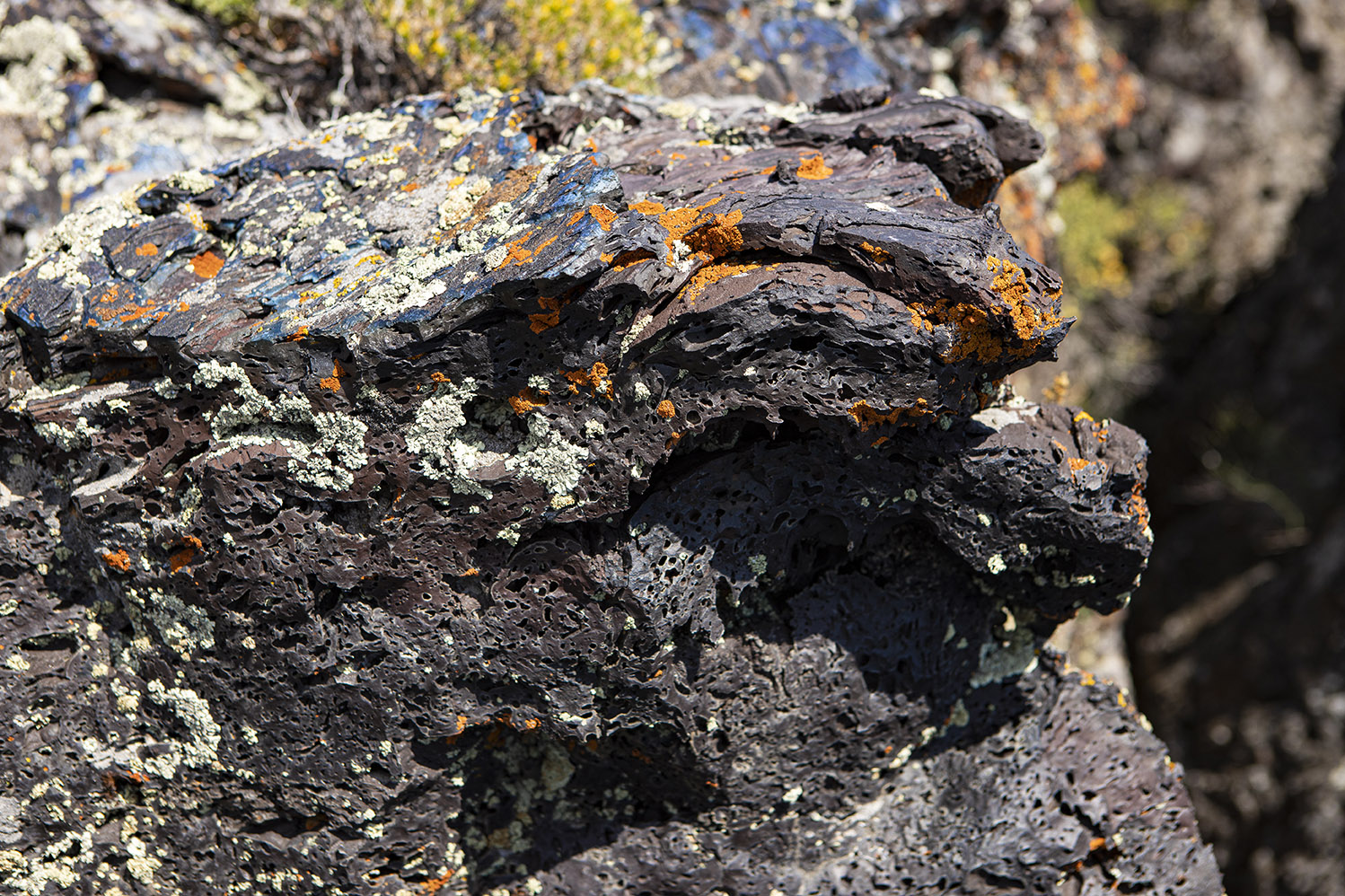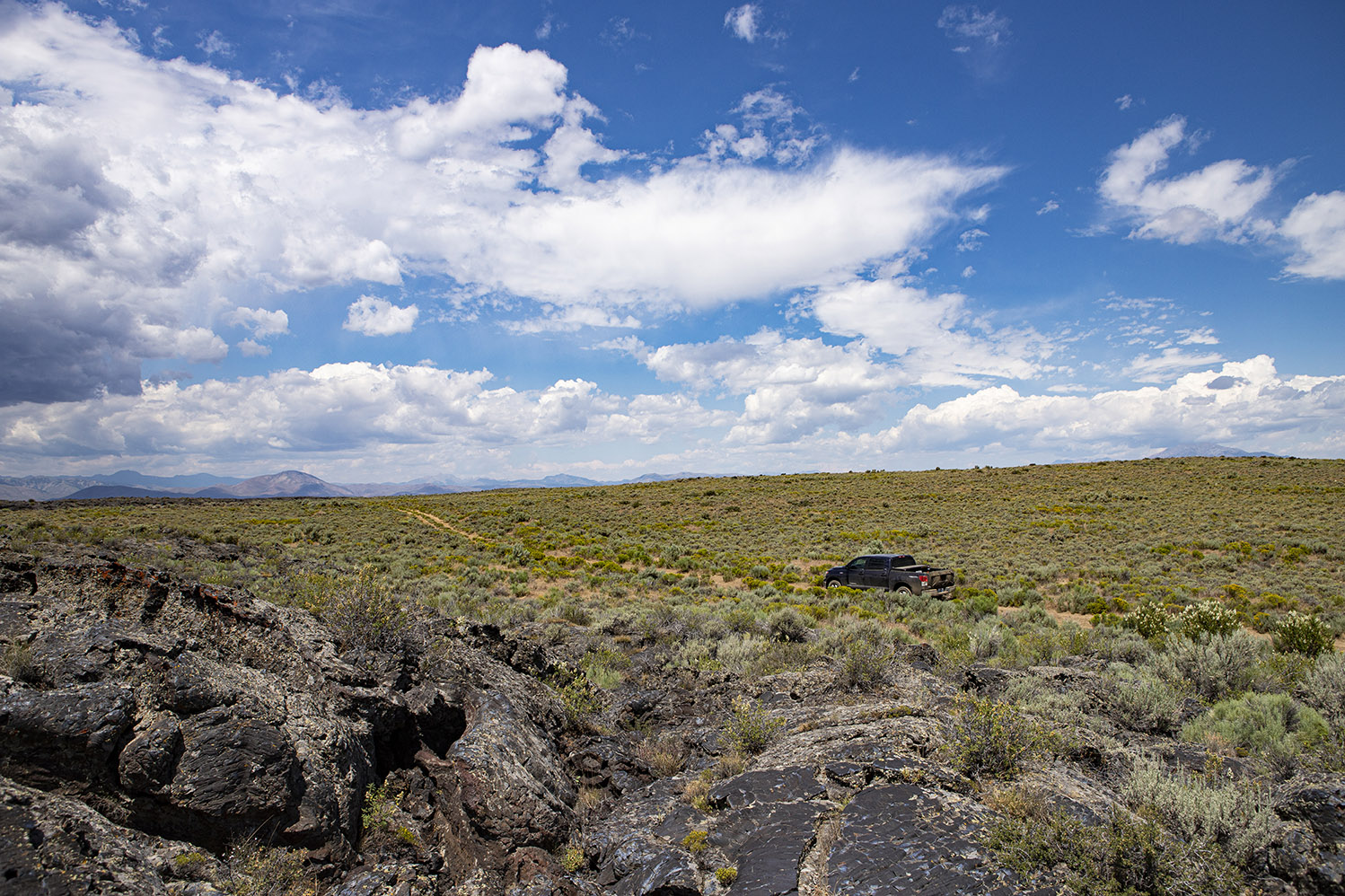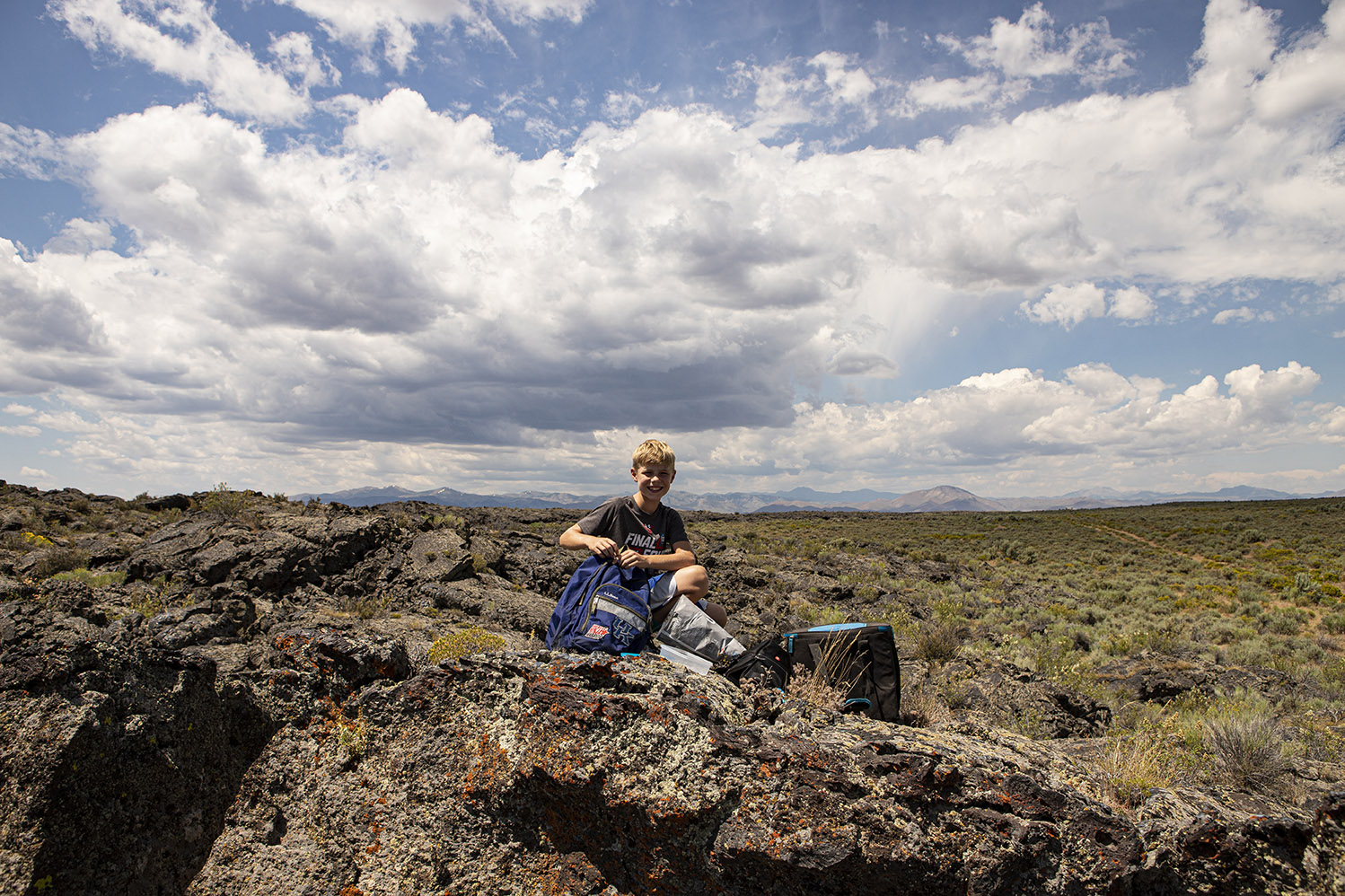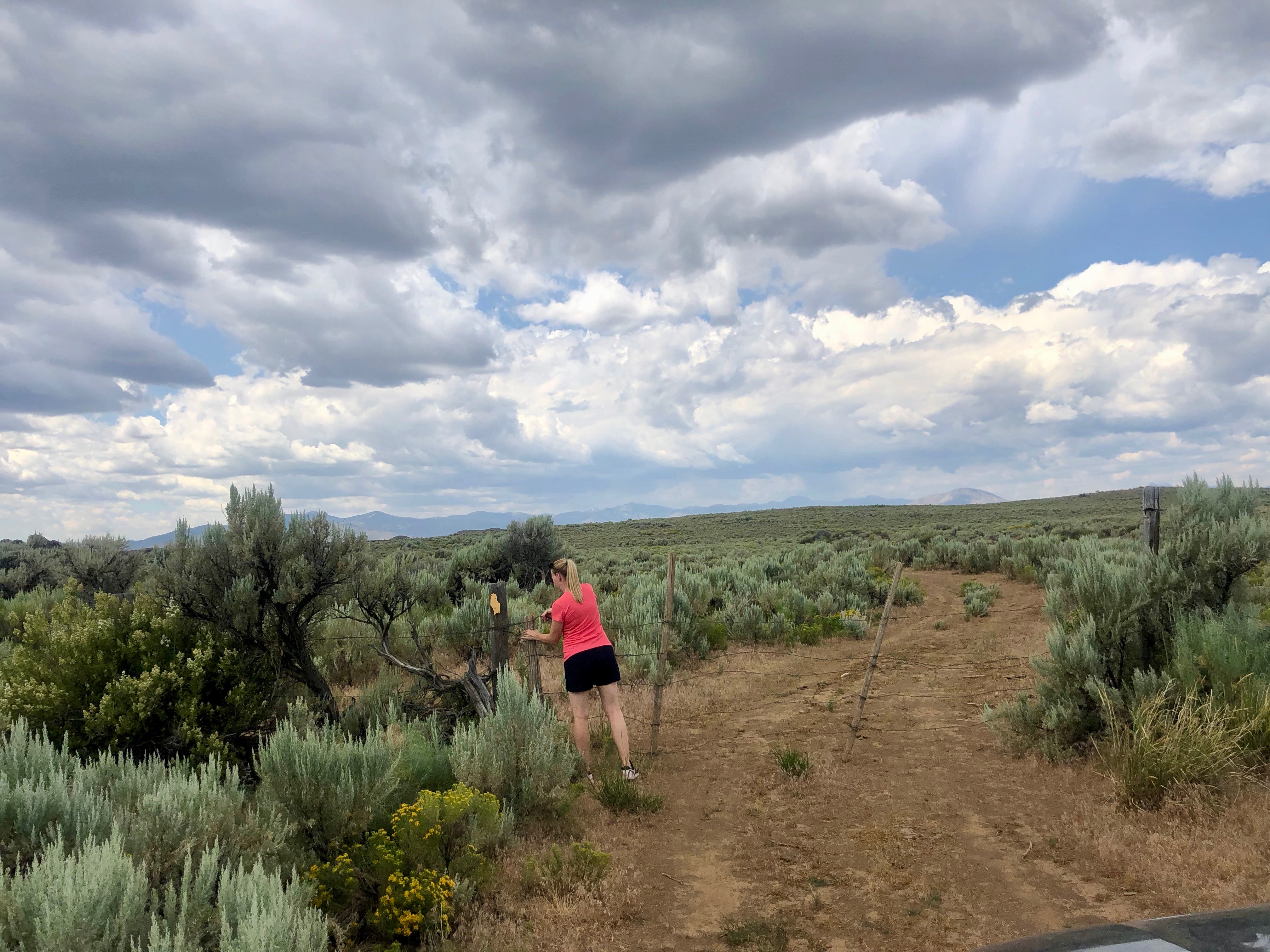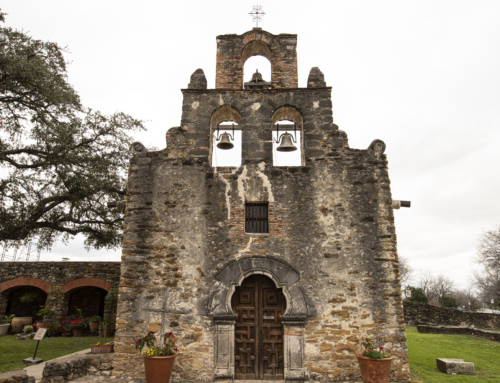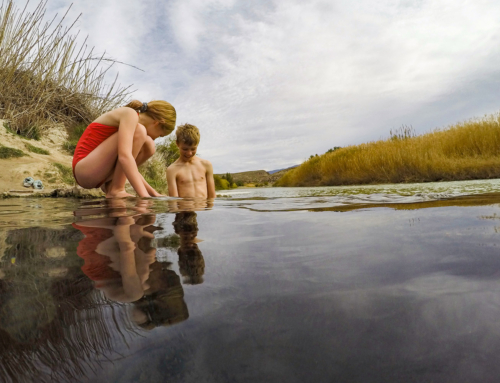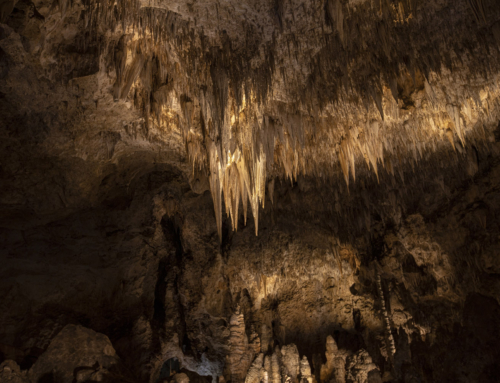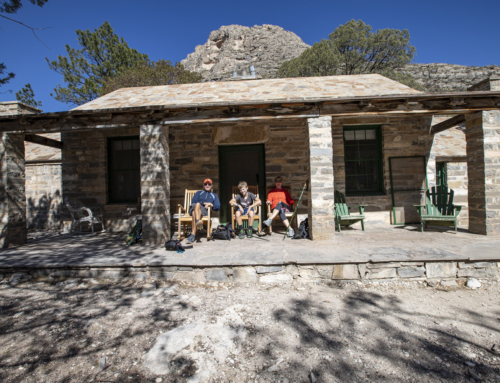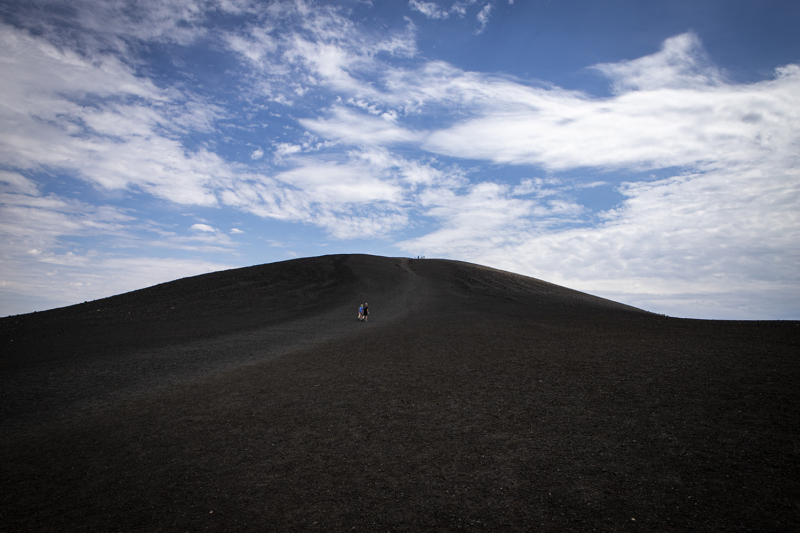
Craters of the Moon is out of this world.
(Sorry, had to do that)
After our little break in Salt Lake and Park City, we were excited to be getting back to the wilderness and into cooler weather. We are attempting to alternate visits to more urban areas in between the rural ones so that we don’t become to “accustomed” to what we are seeing and take it for granted. If you have ever been to Europe, maybe you can relate to this….you go in the first ancient cathedral and are wowed. The second one is also beautiful…and the third…but by about the 9th one, it’s like your senses are numbed to the power of it. We don’t want that to happen, and it’s something that I worry is possible since we are out here seeing one magnificent thing after the other, in rapid succession. Will the kids fail to be impressed by anything by the time we are on month 12? Anyway, one idea we hope will help with this is to switch up our environment….kind of like a palate cleanser, you could say.
So, we headed over to Craters of the Moon National Monument with a refreshed set of senses and excited to get back out there. Again, we were somewhat blind to what the park was all about and learned from our books on the drive in. Turns out there is a giant rift that runs through the area. As the ground moves over time, that rift stretches open and lava can pour out and form volcanos, etc. Over time, it’s erupted about every 2,000 years, with the last eruption being 2,100 years ago…so it’s due any day I guess.
What you are there to see is the black lava flows from these past eruptions, hardened and covering the ground completely. There are fields of flows where you can see that the lava poured over itself into ripples. There are lava tubes that were created, some collapsing and forming tunnels you can go through. There are areas that are covered in black “sand” that are bits of the cinder. And rising up from all that are the buttes and cones that erupted with the lava. Some desert plants have managed to grow, but they are sparse. Gnarly, twisted trees, lichen, dry grasses and desert flowers.
One of all of our favorite things we did while at Craters was to hike up the Inferno Cinder cone. This cone was formed when one of the buttes spewed lava up like a geyser and the spray dried in to cinders in the air and all landed in a huge pile. So, we hiked about a quarter mile straight up what looked like a giant black sand dune. It was crunchy underfoot as you walked on it, and the cinders were shiny and some of them were iridescent or sparkly or had a gold sheen. We later learned that those effects were basically where the lava was so hot but then cooled quickly and a “glass” layer had formed on the outside of it. At the top of the cinder cone was an amazing gnarly old tree. So beautiful and surprising to come to at the top of this giant black crunchy mountain in the desert.
The second day, we were thinking about going back to the park to do a hike that wend around the top of a “bowl” of red and black cinders. However, at the last minute, we decided to venture outside of the “developed” portion of the park and go see the Blue Dragon Lava Flow. We followed a really sketchy map down gravel and dirt roads…the ranger had said they were “well marked” but we only ever saw one sign. Finally, after an hour of dusty, bumpy roads and moving two barbed wire “gates”, we pulled up to some dark crusty lava….that did actually have blue streaks in it. I expected it to be some kind of faint blue-black sheen that you could see if you looked at it with just the right angle. No. This was bright blue cobalt streaks right in the lava. Some places looked like it had been spray painted. Unfortunately, the pictures do not fully capture the blue.
The blue is formed when the mineral titanium separated in the magma flow and cooled on the surface. It’s the only known place this has occurred in the world. And my guess is not very many people ever even see it since we didn’t pass a single car on our trek out to it. In fact, it wasn’t even mentioned on the park map….we found it on a BLM map when we asked about boondocking (more about that in the next post). The fact that so few people would ever get out to this lava flow and that it’s the only place you can see it in the world…that felt so unique and special.
Before you think all of this is magical and sunshine and rainbows though…real life did show up in the form of dozens of bees out there, and it was hot and the kids wanted to leave, and the road back was worse than the road out there, making us all pretty happy to get back to pavement.
My final reflection on Craters of the Moon is the enormity of it. We visited the developed park area and drove about 10 miles in on the loop – and every where you looked you saw lava. Then, we looked at the map of the full lava field…and it was 10, 20, 30 times larger than that developed area. And when we were driving out on the BLM land, you could see it stretching for miles. In fact, it’s over 600 square miles of desolate black hardened lava. And what we saw was just a tiny pinch of the whole thing.
I hope it oversleeps the regular cycle by quite a bit more…
